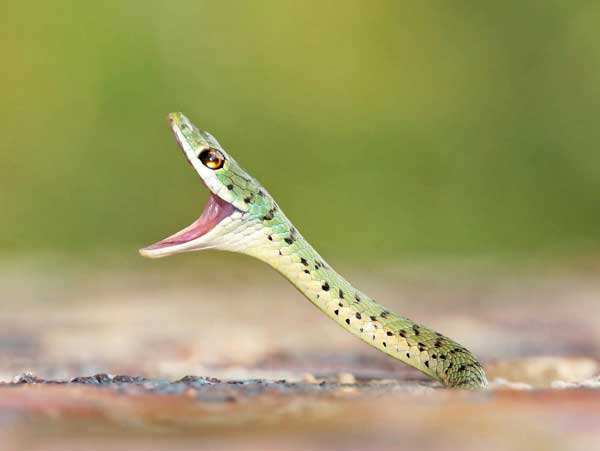Snakebites are a common occurrence in many parts of the world, and knowing how to respond to them can mean the difference between life and death. In this comprehensive guide, we will discuss the essential measures to take at the site of a snakebite, the do’s and don’ts of snakebite management, and how to identify venomous and non-venomous snakebites. We will also delve into the types of snakes commonly found in regions like India, Pakistan, and Bangladesh, and their respective management. So, let’s jump right in.

Reassurance: A Vital First Step
When someone is bitten by a snake, their immediate reaction is often one of fear and anxiety. It’s crucial to reassure the victim as their anxiety can lead to increased heart rate, which can be life-threatening, even in dry bites (non-venomous). Reassurance should include the fact that not all snakes are poisonous. After providing comfort, the next steps are critical.
Cleaning the Wound
After reassurance, the first action is to clean the wound with simple water. This step helps prevent infection and ensures that the wound is free of any debris.
Immobilizing the Limb
Immobilizing the bitten limb is essential during transportation to the hospital. Common mistakes occur at this stage. To immobilize the limb, you’ll need a splint (such as a rod or wood) and a bandage. Place the splint under the bitten limb and wrap the bandage around it. The bandage should be tight enough to block superficial lymphatics but not so tight that it cuts off the arterial blood supply.
Avoid Traditional Tourniquets
Avoid using traditional tourniquets that cut off both arterial and venous blood flow, as they can worsen the situation. Instead, use the bandage technique mentioned earlier to immobilize and prevent lymphatic circulation.
Say No to Harmful Techniques
Avoid outdated techniques like cutting the wound, squeezing, or attempting to suck out the venom, as these methods can cause more harm than benefit.
Handling Tourniquets
If a patient arrives at the hospital with a tourniquet in place, you cannot immediately remove it as it may cause a sudden release of venom into the bloodstream. Instead, use a blood pressure cuff to slowly deflate the cuff while opening the tourniquet gradually. This method allows the poison to enter the bloodstream at a manageable rate.
ABC Approach in the Hospital
Once at the hospital, an ABC approach is crucial. This includes checking blood pressure, pulse, temperature, and single breath count. Single breath count is particularly important to assess respiratory function, especially in cases of neurotoxic snakebites.
Identifying Common Snake Types
In regions like India, Pakistan, and Bangladesh, two main types of venomous snakes are encountered: neurotoxic and hemotoxic. Neurotoxic snakes include cobras and kraits, while hemotoxic snakes include Russell’s viper, saw-scaled viper, and pit viper.
Neurotoxic Snake Symptoms
Neurotoxic snakebites can lead to paralysis and neurologic symptoms such as diplopia and ptosis. Respiratory paralysis is a major concern, and patients may need ventilatory support.
Hemotoxic Snake Symptoms
Hemotoxic snakebites can cause bleeding, coagulopathy, and organ failure. Patients may present with bleeding from the bite site or other bleeding symptoms, such as hematuria.
Laboratory Investigations
Laboratory investigations should be tailored to the type of snakebite. For hemotoxic bites, assess bleeding profiles, complete blood count (CBC), fibrinogen levels, and fibrinogen degradation products. For Russell’s viper bites, consider renal function tests.
Simple Bleeding Test
In areas with limited resources, a simple test can be performed by placing a small amount of blood in a clear, transparent bottle. If the blood clots within 20 minutes, coagulation is normal; if not, it indicates hemotoxicity.
Local Examination
During local examination, look for classical fang marks, erythema, swelling, and blisters. Classical fang marks are indicative of venomous snakes.
Venomous vs. Non-venomous Bites
Venomous snakebites typically leave two distinct fang marks, while non-venomous snakes may leave two rows of teeth marks or scratches.
Rapidly Spreading Swelling
Rapidly spreading swelling, especially if it involves a significant portion of the limb, is a sign of a venomous bite and requires immediate intervention.
Administering Anti-Snake Venom
Anti-snake venom is indicated for patients with venomous snakebites who display symptoms like local swelling, bleeding, coagulopathy, and neurotoxicity. It should be administered slowly to avoid allergic reactions.
Conclusion
In summary, snakebite management involves several critical steps, including reassurance, wound cleaning, limb immobilization, and proper identification of venomous and non-venomous snakebites. Understanding the specific characteristics and symptoms associated with different snake types is essential for effective treatment. Proper laboratory investigations and the cautious administration of anti-snake venom can save lives in these situations. Remember, every snakebite is unique, and a swift and well-informed response can make all the difference.
